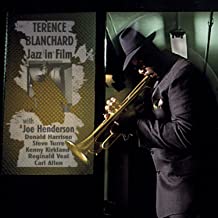
The Quarantined Jazz Voyager
As cities begin to open back up I am remaining vigilant in my social distancing and trust you are doing the same. Wary of large groups or crowded public transportation, I am staying to my schedule of grocery, doctor visits, home.
I’ve selected Jazz in Film, a studio album by trumpeter Terence Blanchard released on March 2, 1999 on Sony Records. The recording was split into two sessions, the first on March 17~18, 1998 at Signet Soundelux in Los Angeles, Californiaand the second on April 7, 1998 at Clinton Recording Studios, Studio B, New York City.
The album was meant to be a portrait of jazz in cinema history, a way to chronicle the evolution of jazz score from the late 1940s to present day. It featured highly influential themes from classics like Anatomy of a Murder, Taxi Driver and seminal noir The Man With the Golden Arm. Blanchard has carved out a little space for himself, revisiting one of his compositions written for Spike Lee’s Clockers.
The album features an all-star lineup backed by a string orchestra arranged by Blanchard. Steven Mercurio and J.A.C. Redford were the conductors for the sessions.
Track Listing | 68:19- A Streetcar Named Desire (Alex North) ~ 7:55
- Chinatown (Jerry Goldsmith) ~ 8:23
- The Subterraneans (André Previn) ~ 9:08
- Anatomy of a Murder (Duke Ellingtn) ~ 8:25
- The Pawnbroker (Quincy Jones) ~ 7:02
- Taxi Driver (Bernard Herrmann) ~ 7:12
- Degas’ Racing World (Ellington) ~ 7:57
- Man With The Golden Arm (Elmer Bernstein) ~ 4:13
- Clockers (Terence Blanchard) ~ 8:01
- Terence Blanchard – trumpet, arranger
- Joe Henderson – tenor saxophone (3, 6, 7, 8, 9)
- Steve Turre – trombone (1, 4, 8)
- Donald Harrison – alto sax (1, 4, 5)
- Kenny Kirkland – piano
- Reginald Veal – bass
- Carl Allen – drums
More Posts: adventure,album,club,genius,jazz,museum,music,preserving,restaurant,travel,trumpet
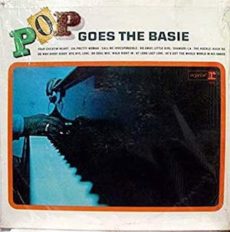
Daily Dose Of Jazz…
Robert C. Plater was born May 13, 1914 in Newark, New Jersey and began playing alto sax at age 12. He played locally in Newark with Donald Lambert and the Savoy Dictators in the 1930s. From 1940-42 he played with Tiny Bradshaw before spending 1942-45 serving in the U.S. military during World War II. After his discharge he worked briefly with Cootie Williams, then played intermittently with Lionel Hampton between 1946 and 1964, recording eleven albums with the band.
He also arranged with Hampton, as well as doing some freelance work on the side. In 1964 he took Frank Wess’s place in the Count Basie Orchestra, where he recorded thirty-nine albums and played until his death. His only recordings as a leader were four songs for Bullet Records in 1950.
He was the co-composer of Jersey Bounce, a popular dance number in the 1940s, recorded by various musicians including Glenn Miller and Ella Fitzgerald. Alto saxophonist Bobby Plater passed away on November 20, 1982 in Lake Tahoe, Nevada.
More Posts: arranger,history,instrumental,music,saxophone
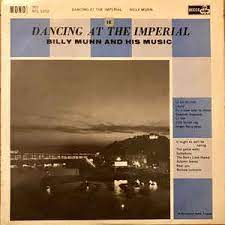
Daily Dose Of Jazz…
Billy Munn was born William on May 12, 1911 in Glasgow, Scotland. He studied at the Athenaeum School of Music before moving to London, England and joining the band of Jack Hylton from 1929 to 1936.
During the Thirties he played on recordings with Spike Hughes and Benny Carter. Following these engagements Billy then played with Sydney Lipton from 1936 to 1940, and concomitantly played with Louis Armstrong and Coleman Hawkins on their tours of England, as well as with Wingy Manone in the United States.
He played with Stephane Grappelli in 1943 and George Chisholm in 1944, then led his own ensemble at the Orchid Room in Mayfair from 1945 to 1948. He co-founded the BBC program Jazz Club in the 1940s with producer Mark White and clarinettist Harry Parry.
From 1948 to 1949, Munn directed the Maurice Winnick Orchestra at Ciro’s club in London, England and subsequently led the house band at the Imperial Hotel in the seaside resort town of Torquay, England for three decades, from 1949 to 1979. He recorded several times with this group. After 1979 he played solo, mostly locally in Torquay.
Pianist and arranger Billy Munn passed away on May 2, 2000 in Ayrshire, Scotland, a few days shy of his 89th birthday.
More Posts: arranger,bandleader,history,instrumental,jazz,music,piano
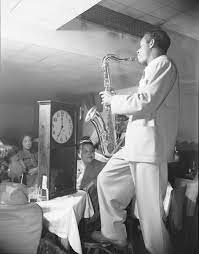
Three Wishes
The Baroness made an inquiry of Kermit “Scotty” Scott of his three wishes were he given them and he responded with just one:
- “I wish I could get on a good recording date.”
*Excerpt from Three Wishes: An Intimate Look at Jazz Greats ~ Compiled and Photographed by Pannonica de Koenigswarter
More Posts: baroness,history,instrumental,jazz,music,pannonica,saxophone,three,wishes
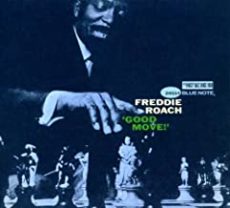
Daily Dose Of Jazz…
Frederick Roach was born on May 11, 1931 in The Bronx, New York. He made his record debut in 1960 with saxophonist Ike Quebec on the albums Heavy Soul and It Might as Well Be Spring and played with Willis Jackson.
>From 1962-64 he recorded five albums as a leader for the Blue Note Records label. He also recorded with Donald Byrd on the album I’m Tryin’ to Get Home. His original writing, steady basslines, and highly musical fleet-fingered right hand set him apart.
1966-67 saw Freddie recording three more albums as a leader for Prestige Records, which are in a more commercial vein than his Blue Note dates. He left the music business in 1970 and became involved in theater, playwriting and film.
Roach was a soulful organist, certainly influenced by Jimmy Smith, but with a distinct sound and a quite original concept, which was perhaps best heard on “Good Move” for Blue Note. His Blue Note albums are critically acclaimed
Soul jazz Hammond B3 organist Freddie Roach, who moved to California for the film industry, suffered a heart attack and passed away on October 3, 1980.
More Posts: bandleader,composer,history,instrumental,jazz,music,organ




